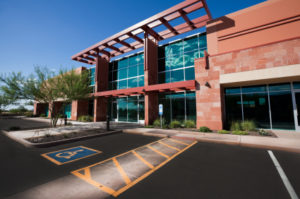 A significant term in most commercial leases is the right or obligation of landlord or tenant to remodel the leased premises during the lease term. When negotiating and drafting such a lease provision, it is important to address: (a) which party is responsible for the remodel work; (b) which party is responsible for paying for the work; (c) which party has approval rights regarding the design of the remodel; (d) which party has the overall approval rights for the work; and (e) whether the landlord is required to provide the tenant with temporary space within which to operate during construction.
A significant term in most commercial leases is the right or obligation of landlord or tenant to remodel the leased premises during the lease term. When negotiating and drafting such a lease provision, it is important to address: (a) which party is responsible for the remodel work; (b) which party is responsible for paying for the work; (c) which party has approval rights regarding the design of the remodel; (d) which party has the overall approval rights for the work; and (e) whether the landlord is required to provide the tenant with temporary space within which to operate during construction.
Understandably, a commercial landlord will want some degree of control over the remodel process, regardless of which party is paying for the work. It is often prudent to clarify in the lease the trigger point at which a remodel/renovation requires landlord approval. Typically, non-structural improvements which do not exceed a sum certain (often $10,000 or less) do not require landlord approval. If the remodel/renovation is structural and/or exceeds the specified sum certain, the lease should clearly address who pays the work and how that payment is funded. Landlords typically fund renovations by: (a) providing the tenant with an improvement allowance (typically a fixed sum); and/or (b) by providing free or abated rent, which often takes into account the same factors referenced above (this can often equal one month of free or abated rent for each remaining year in the lease term). These terms can vary from market to market depending on the size of the premises, the length of the remaining lease term, the location of the space, and the tenant’s performance/compliance to date.
In addition to identifying which party is responsible for coordinating and paying for the work, the lease should also address the level of approval required by the landlord and which party is responsible for obtaining approvals/permits from the applicable regulatory body (i.e., City or County). A commercial landlord will almost always want the ability to review and approve the tenant’s proposed plans and specifications, particularly if they involve structural changes to the building, as well as the right to approve the tenant’s architect and general contractor. A savvy tenant can sometimes negotiate into the lease a requirement that the landlord not unreasonably withhold, condition, or delay said consent, and can even require the landlord to approve the plans within a time certain (perhaps 10 days), and the failure by the landlord to reject the plans/specifications can be deemed approval by the landlord.
Depending on the negotiating leverage of the parties and whether open space in the building is available, a tenant can in some circumstances build into the lease the right to use temporary space to use during the remodel, thereby minimizing interruption of the tenant’s business operations, and in turn, lost revenues. If the tenant is able to negotiate the addition of such a right, the lease should address the amount of rent and pro rata share of operating expenses that are due from the tenant during the use of this temporary space.
While remodel/renovation provisions benefit both the landlord (by increasing the property value) and the tenant (by providing a more attractive and user-friendly space), given the cost implication, it is prudent that the parties each seek the guidance of an experienced real estate attorney. If you have questions regarding remodel provisions or other commercial lease related issues, please contact Josh Pope or one of the attorneys in MPBA’s Real Estate Department.
Excellent explanation. Anyone can easily comprehend since it’s simple & focused. Keep up the great work!
The simplicity of your presentation is highly-motivating for learning. Please keep it up for your teeming followers.
It’s important to understand the difference between “improvements” and “trade fixtures. Thanks for sharing.